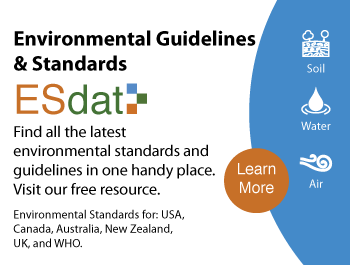The Kansas policy on TPH and LNAPL provide guidelines observed in implementing initiatives to address petroleum contaminated sites. Such initiatives include characterizing, remediating, and managing the release of petroleum into the environment. The policy was developed to be used in place of the Kansas Department of Health and Environment (KDHE) Bureau of Environmental Remediation (BER) Policy. The primary purpose of the policy is to enforce characterization, management, and mitigation of risks of TPH and LNAPL on human health and the environment. The development process incorporated technical documents, among other resources.
The assessment of site conditions and the development of a conceptual site model (CSM) is crucial for the applications of this policy. The laboratories where analysis is conducted must have KDHE certification. The policy utilizes a new strategy where TPH contaminants are divided into three categories; low-range hydrocarbons (LRH), mid-range hydrocarbons (MRH), and high-range hydrocarbons (HRH). Initially, Diesel Range Organics (DRO) and Gasoline Range Organics (GRO) were applied. Consequently, a tiered approach is applied for complex sites. The technique allows for quantitative risk assessment and risk evaluation as well as comparisons to KDHE screening levels for the complex sites. The processes are included in Tier 1 to 4 approaches. Also, the policy presents exposure factors and toxicity values for TPH and LNAPL, which assist in analysis and various assessments.
The use of the Kansas policy on TPH and LNAPL helps address environmental concerns that threaten human health. Its application in identifying risks to human health and the environment is significant in developing actions for mitigation and remediation. It is thus essential for the achievement of human health and environmental goals.
All compiled environmental guidelines and standards are shown on the ESdat website. These are pre-loaded into ESdat Online.
ESdat is a specialist environmental database system; used to validate and import a broad spectrum of Environmental Data and help users analyze and report it.
ESdat Online delivers a highly cost-effective and efficient approach to store your ongoing monitoring environmental data, optionally with a historical data upload provided as a getting started service. ESdat Online is perfect if you want a cloud-based system that collates and reports your ongoing laboratory and field results.
ESdat Server provides the advantages of ESdat Online with the option of adding ESdat Desktop for data experts to upload their historical data, effectively interrogate the raw data being used within the database, and automatically launch and send data to other Desktop Applications such as Surfer, ArcGIS and Excel.
A variety of complementary products are also available to help with related work, such as sample planning and electronic Chain of Custody (LSPECS), offline field data collection or bore logging (pLog), production of bore logs (ESlog), public portals and customized reporting.

Reference
The Kansas Department of Health and Environment (2017). Total Petroleum Hydrocarbons (TPH) and Light Non-Aqueous Phase Liquid (LNAPL) Characterization, Remediation and Management. Retrieved from https://esdat.net/Environmental%20Standards/US/KS/KS_BER_041.pdf






